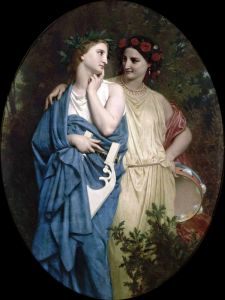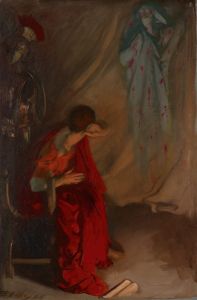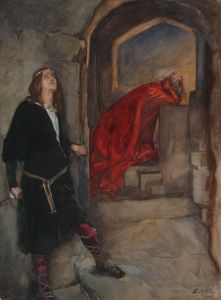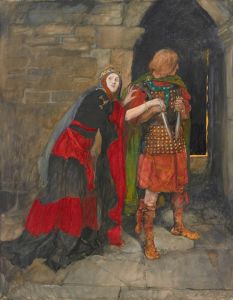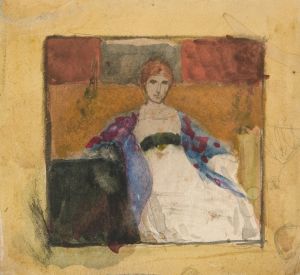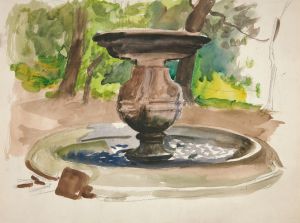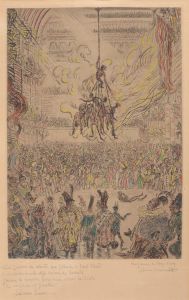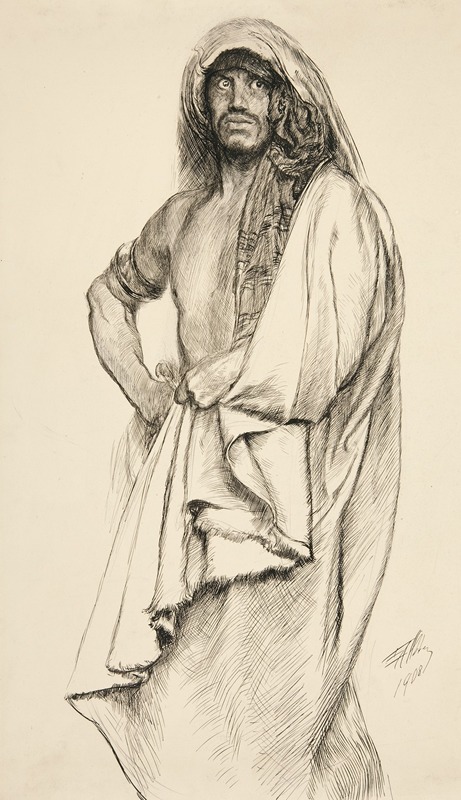
Aaron, from Titus Andronicus
A hand-painted replica of Edwin Austin Abbey’s masterpiece Aaron, from Titus Andronicus, meticulously crafted by professional artists to capture the true essence of the original. Each piece is created with museum-quality canvas and rare mineral pigments, carefully painted by experienced artists with delicate brushstrokes and rich, layered colors to perfectly recreate the texture of the original artwork. Unlike machine-printed reproductions, this hand-painted version brings the painting to life, infused with the artist’s emotions and skill in every stroke. Whether for personal collection or home decoration, it instantly elevates the artistic atmosphere of any space.
Edwin Austin Abbey's painting "Aaron, from Titus Andronicus" is a notable work that depicts a character from William Shakespeare's early tragedy "Titus Andronicus." Abbey, an American artist known for his illustrations and paintings, was particularly recognized for his works that brought to life scenes from Shakespearean plays. This painting is part of Abbey's broader body of work that explores themes from literature, particularly those of Shakespeare, which he frequently illustrated throughout his career.
"Aaron, from Titus Andronicus" focuses on the character Aaron the Moor, who is one of the central figures in Shakespeare's play. Aaron is depicted as a complex antagonist, known for his cunning and malevolence, yet also for his depth and the complexity of his motivations. In the play, Aaron is a lover of Tamora, the Queen of the Goths, and is instrumental in the series of tragic events that unfold. His character is often discussed in literary circles for his embodiment of evil, as well as for the racial themes his character introduces to the narrative.
Edwin Austin Abbey's portrayal of Aaron captures the essence of the character's dark and manipulative nature. Abbey's style is characterized by meticulous attention to detail and a dramatic use of light and shadow, which he employs to emphasize the sinister aspects of Aaron's personality. The painting likely reflects Abbey's deep understanding of the play and his ability to translate Shakespeare's complex characters into visual art.
Abbey was part of a movement of artists in the late 19th and early 20th centuries who were fascinated by Shakespearean themes, and his works contributed to the popularization of Shakespeare's plays in visual culture. Abbey's paintings and illustrations were widely appreciated for their historical accuracy, narrative depth, and artistic skill. His work on Shakespearean subjects was part of a larger trend during this period, where artists sought to bring literary classics to life through visual media.
The painting "Aaron, from Titus Andronicus" is an example of Abbey's ability to convey the psychological depth of Shakespeare's characters. While specific details about the painting's creation, such as its exact date or current location, may not be widely documented, it remains a significant piece within Abbey's oeuvre and within the context of Shakespearean art.
Abbey's contributions to art and literature were recognized during his lifetime, and he was elected to the Royal Academy in London, reflecting his status as an artist of international renown. His works continue to be studied and appreciated for their artistic merit and their role in the interpretation and popularization of Shakespeare's works.





